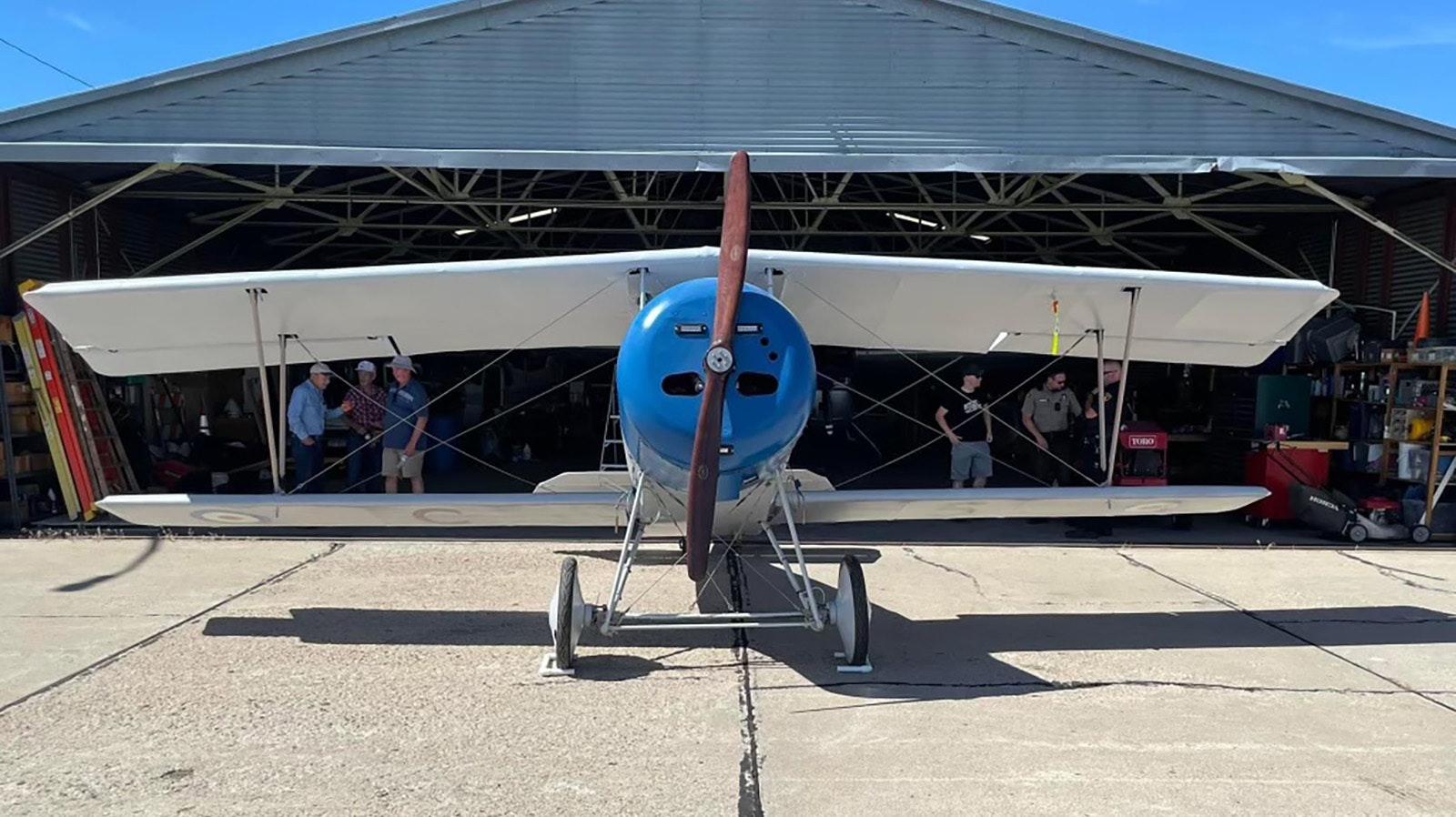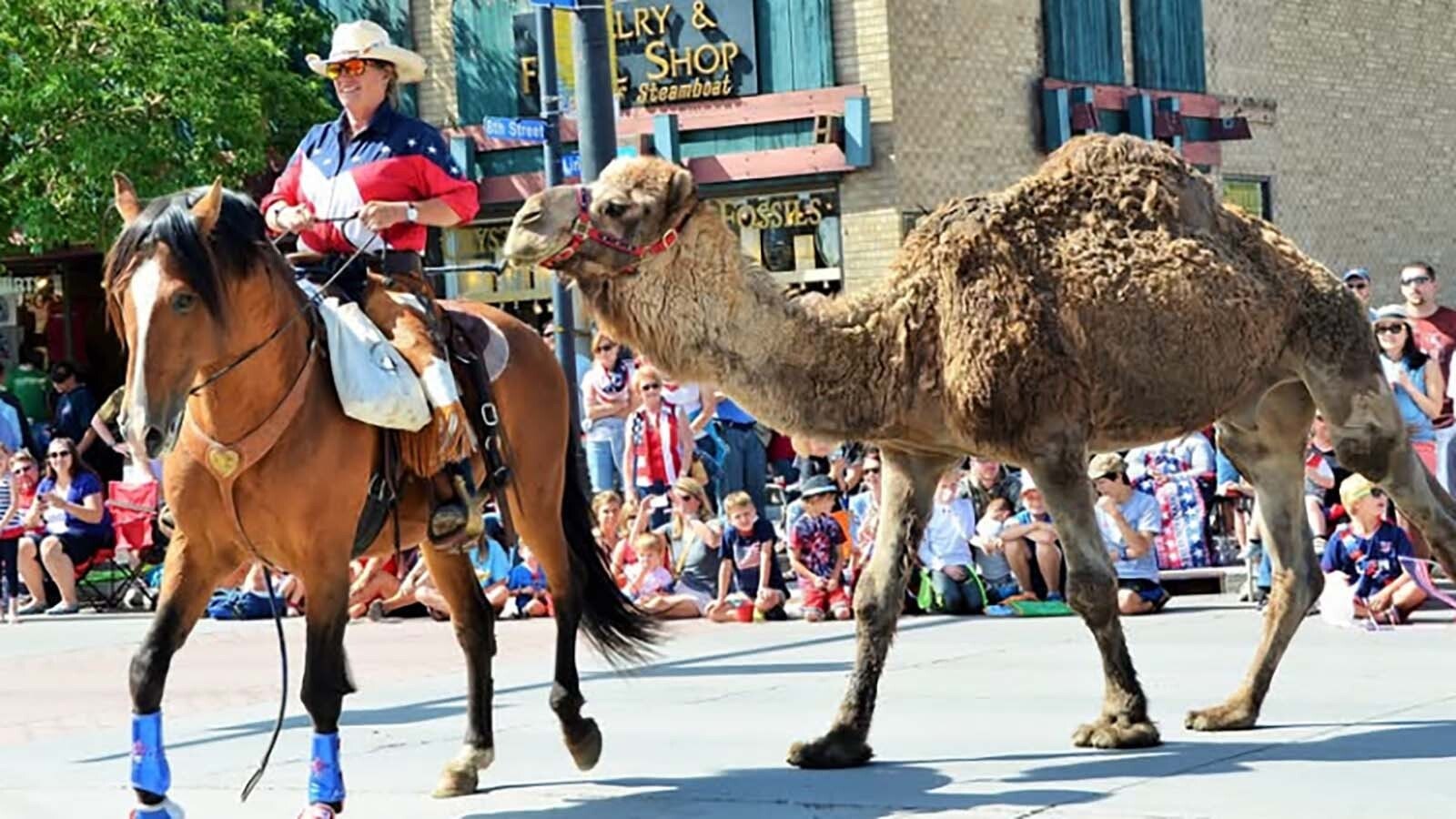During World War I ace Billy Bishop of the Canadian Royal Flying Corps shot down 45 enemy airplanes and two balloons flying a French Nieuport 17 biplane.
For the past 10 years, James Wertelka of Torrington has labored to build a replica of the plane Bishop flew, even down to the decals. Soon, within a few weeks, the airplane is expected to make its first test flight.
Once it’s tested and certified, it would be one of the rarest airplanes in the world. It also may be the only flying Nieuport 17, Wertelka said.
He Made Every Part
Wertelka is a corrections officer at the Wyoming Medium Correctional Institution in Torrington. He’s also a graduate of WyoTech in Laramie and a former corporate pilot.
When he started building the airplane in 2013, Wertelka said he expected it to be about a two-year project.
“I like a challenge, but I figured it would take a couple of years, not 10,” said Wertelka. “Once I get started, I have a tendency to finish. I don’t know how to quit.”
His replica looks just like the plane Bishop flew during World War I, but it’s made with modern parts, including aircraft aluminum. The original was made with wood and fabric.
Wertelka worked closely with aircraft designer Robert Baslee of Holden, Missouri. Baslee built World War I-era planes that were used in the 2009 biopic movie about Amelia Earhart, “Amelia,” and four airplanes for the 2006 release of “Flyboys.”
“There’s nothing to buy for this airplane,” Wertelka told Cowboy State Daily. “I had to build all the parts except the wheels and tires.”

With Upgrades
In the building process, Wertelka also made some major upgrades.
His Nieuport 17 has a wheel under the tail rather than a block of wood used on the original. He added brakes and bearings on the front wheels.
The original aircraft had no brakes. Crew members who worked in airports in Europe during the war had to run out on the airfield and catch the airplanes by hand after landing.
The old planes didn’t use wheel bearings, they had straight axles passing through steel wheels.
Wertelka used a Volkswagen 2180 engine from a racing airplane for his re-creation. The engine creates 350 pounds of thrust, much more than the original.
He rebuilt the entire engine because it had been subject to a ground strike that happened on a Wyoming airfield. The pilot hit a gopher hole and flipped the airplane while taxiing and the collision caused the propeller to hit the ground.
When this happens, Wertelka explained, it creates microscopic scratches on the engine bearings.
Wertelka’s replica also has a carburetor, a major improvement over the originals.
The old airplanes had a switch in the cockpit for each cylinder. Pilots then had to manipulate the airplane’s speed by switching individual cylinders off to slow down or on to speed up.
This replica also has a radio, lights and modern navigation, and a heater that’s plumbed from the engine into his flight suit.
Wertelka also attached stronger struts to the lower wings. On the original airplanes, these struts often failed because the airplanes performed a lot of power dives.
Wertelka said pilots involved in dogfights over Europe during WWI would climb as high as 19,000 feet to gain a competitive advantage. After spotting enemy planes they would power dive on them causing the lower wing struts to sometimes fail.
“This airplane is lighter, has better lift, is more powerful and safer than the originals,” he said.

Break Out The Calculator
Calculus was one factor that added time to this build. Wertelka said he “barely squeaked by on geometry” in school, and he didn’t anticipate the number of math problems he needed to solve in the build process.
To deal with the math-related frustration, Wertelka says he kept a “crying couch” in his hangar.
“Anybody can figure a 90-degree line, but when you’re working with a radius there’s a whole set of different calculations you have to use,” he said. “Everything has to be verified in two different directions.”
The Nieuport 17 is a sesquiplane, meaning the lower wing is only half as big as the main wing. This not only makes it rare, but also extremely difficult to engineer, he said.
“Very few planes are like this, and that’s why there is so much math involved,” he said. “Nobody wants to mess with them and that’s one reason why it’s so rare.”
Close To Flight
Wertelka is finishing the weight and balance calculations. After that, a test pilot from the Experimental Aircraft Association will fly the plane and they will make adjustments until it will fly straight when the pilot lets go of the controls.
After that, Wertelka will submit paperwork to the Federal Aviation Administration and then he’s required to put 50 hours on the plane in close proximity to his local airport. When all that is complete he can begin to show it off at air shows, fly-ins and parades.
“The only way to fly this airplane is to actually do it, there’s no way to train for it,” he said. “Hopefully, I’ll be flying it later this fall or early winter.”
He plans to fly it to Oshkosh, Wisconsin, next summer for AirVenture, the largest air show in the world for experimental aircraft.
“AirVenture is like Christmas for pilots,” he said.
He expects the airplane will cruise at about 90 mph and travel about 300 miles on 17 gallons of fuel.







